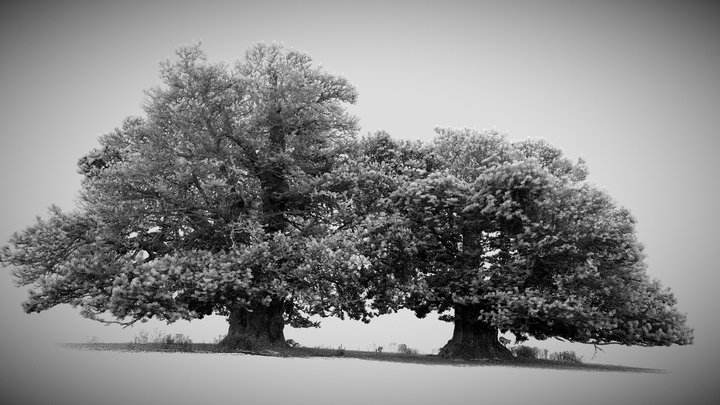SCATTER: Scanning Ancient Trees with Terrestrial LiDAR
The Woodland Trust Conservation Research Programme has been funding an innovative research project named SCATTER: Scanning Ancient Trees with Terrestrial LiDAR. This project was led by a team of researchers (Dr Phil Wilkes, Prof. Mathias Disney and Dr Cecilia Chavana-Bryant) who travelled across the UK and used cutting edge LiDAR technology to measure and examine the diversity and extremes of oak tree architecture (or structure). The LiDAR scans were used to create 3D models of over 30 trees previously recorded on the Ancient Tree Inventory, which can be viewed here: SCATTER (@SCATTER.project) - Sketchfab
The SCATTER project was designed with three key aims:
- PUBLIC: One goal of this project was to create an open-access digital archive of ancient and veteran oak trees, accessible to everyone regardless of location.
- ACADEMIC: Compare and contrast tree architecture from across a diversity of ancient and veteran oak trees to understand the extremes of the tree’s structural envelope and their structural limitations.
- APPLIED: Understand the benefits and limitations of these techniques for tree managers.

credit: Dr Cecilia Chavana-Bryant (UCL)
Why ancient oaks?
The research examined ancient and veteran oaks belonging to two species (pedunculate oaks and sessile oaks). Oak trees are some of the most commonly found ancient trees in the UK and are iconic ecological and cultural components of our UK landscape. Trying to understand how these trees survive to grow so old and what we can do to protect them while encouraging a landscape for future veterans, the ancients of tomorrow, is both fascinating and vitally important.
Explore the SCATTER ancient and veteran trees:
The SCATTER dataset gives you the ability to tour many of the spectacular ancient and veteran oak trees across the UK all from the comfort of your home. Through the digital archive, journey to Belfast to see what is thought to be the oldest tree in Northern Ireland, The Belvoir Oak (ATI number: 302). Or perhaps you will head to Cornwall, to explore the hollow in the Darley Oak found at Bodmin Moor (ATI number: 12217). Or even explore the stunning Crockmere Oak, which once stood in Savarnake Forest but unfortunately fell during one of the early storms in 2024. We hope you enjoy visiting each of these digital trees in the free Sketchfab archive which can be found here: SCATTER (@SCATTER.project) - Sketchfab.

3D model of Curly Oak on Sketchfab

3D rendition of Capon Oak on Sketchfab

3D model of Pwllpriddog Oak on Sketchfab
Want to find out more?
- Check out the Woodland Trust SCATTER webpage: https://www.woodlandtrust.org.uk/about-us/what-we-do/research-and-evidence/scatter-project/
- View the 3D models on Sketchfab: https://sketchfab.com/SCATTER.project
- Examine the SCATTER research dataset on Zendo: https://doi.org/10.5281/zenodo.11658042
- Watch The Ancient Tree Forum’s external webinar (June 2023).
With thanks:
We would like to take this opportunity to thank everyone who helped bring this project to life.
The researchers Dr Phil Wilkes (RBG Kew Wakehurst (formerly University College London (UCL)), Prof. Mathias Disney (UCL and NERC National Centre for Earth Observation) and Dr Cecilia Chavana-Bryant (UCL).
The project partners, Robert Warnock (The Ancient Tree Forum), Vikki Bengtsson (Pro Natura, Senior Ecologist), Emma Gilmartin (Arboricultural Association, formerly Woodland Trust).
And all the landowners who provided access to their magnificent ancient and veteran oaks.
